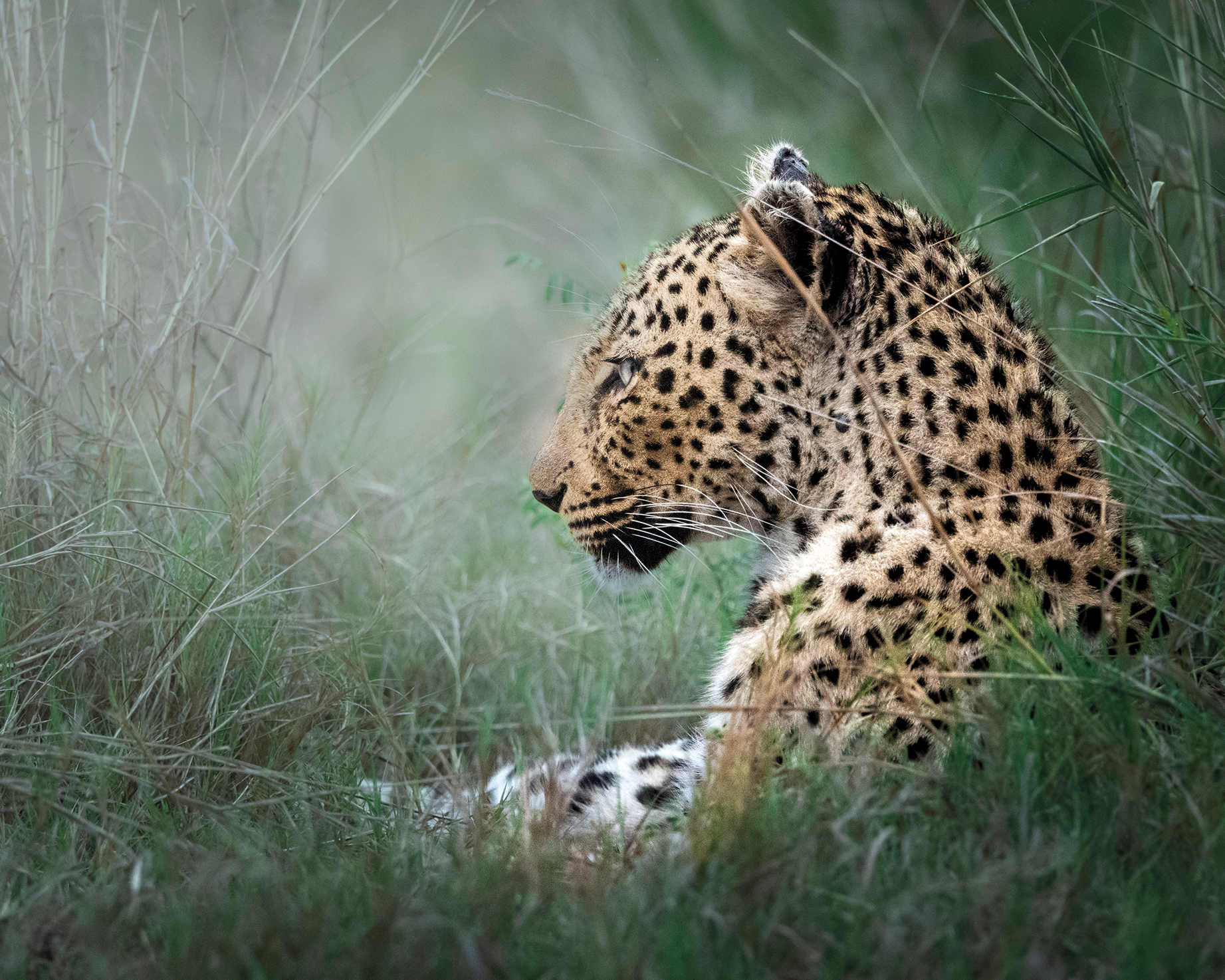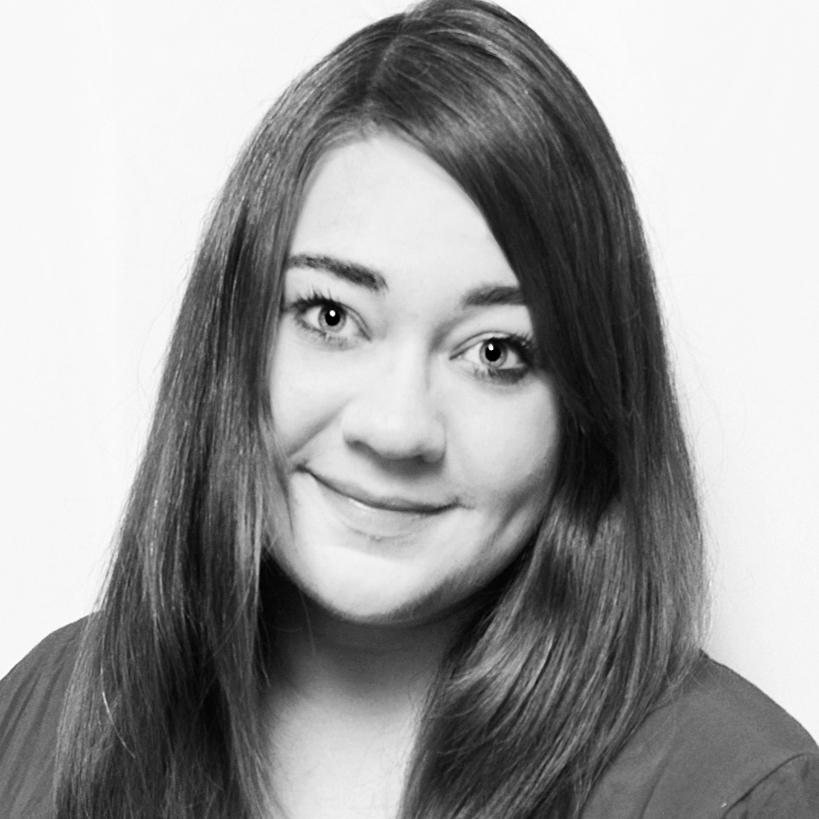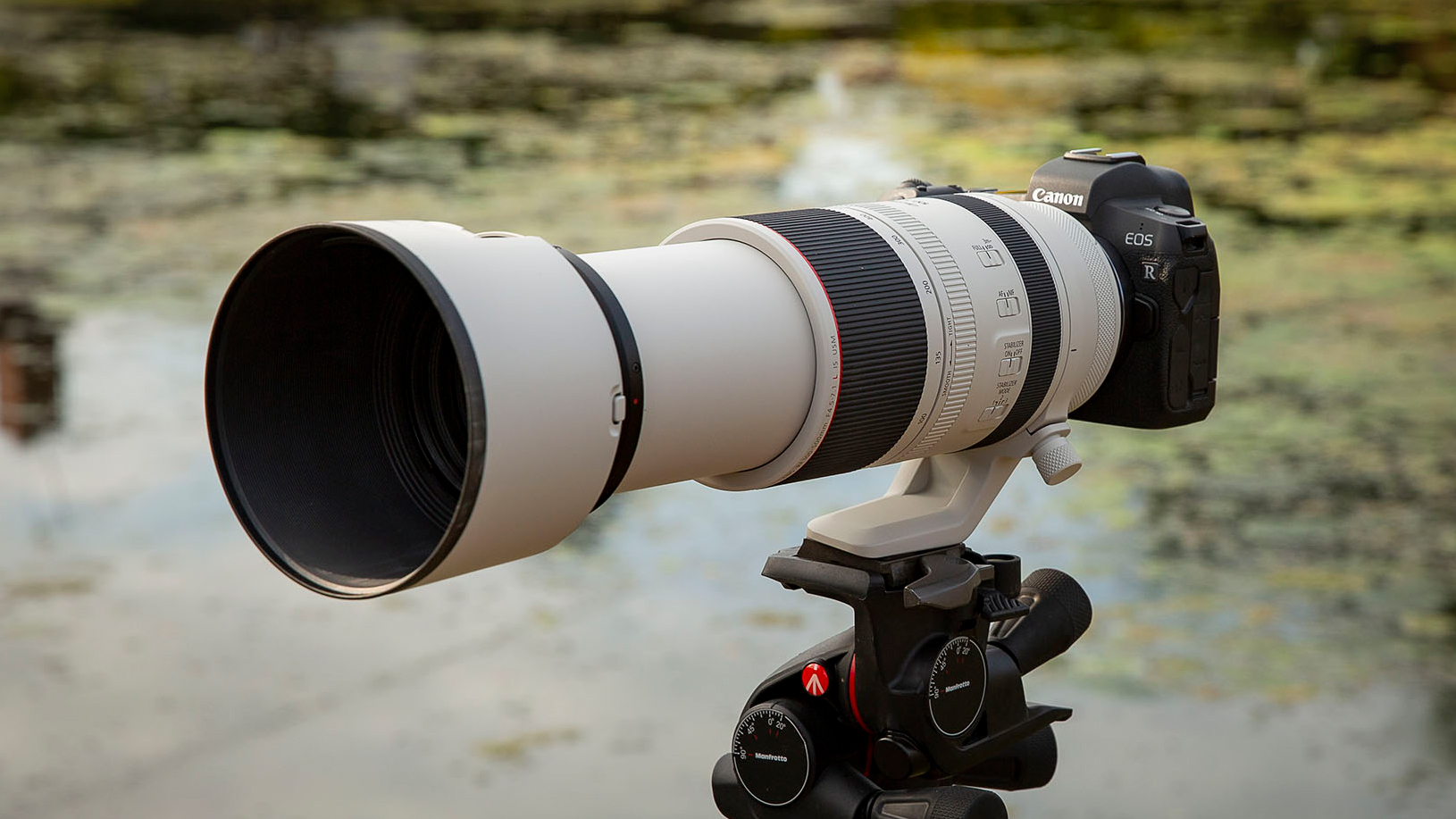"Being close to a leopard doesn't happen often!" Wildlife photographer captured rare shot using APS-C camera and Canon RF 100-500mm f/4.5-7.1L IS
After hours of waiting, Rémi Vacher captured a calm and intimate moment with one of Africa's most elusive predators using the Canon RF 100-500mm f/4.5-7.1L IS

French wildlife photographer Rémi Vacher has explored many parts of the planet and ticked off his 75th different country last year. On a trip to Kruger National Park, South Africa, Rémi had the chance to turn his Canon RF 100-500mm f/4.5-7.1L IS lens towards one of Africa's most elusive predators – the leopard.
Capturing the perfect wildlife shot requires more than great camera equipment; research and preparation are key. The most important quality is patience. And that virtue was tested as Rémi waited for the ideal moment to frame this serene portrait.
Rémi captured this image at 1/2000 sec, f/6.3, ISO 6400, using a Canon EOS R7 paired with the Canon RF 100-500mm f/4.5-7.1LIS – a lens that's up there with the very best Canon telephoto lenses we've tested. For added stability, he supported his setup on a bean bag from within the safari vehicle.
The story
"We were aware of a leopard that had been seen a few hours before, but the grass was quite high, so it was challenging to find," says Rémi. "It took us an hour to search the area. Once we found it, I worked with our guide to make sure I could get the best alignment. Then we stayed for another hour, waiting for the leopard to get his face perfectly aligned for a side profile.
"Being close to a leopard doesn't happen often because they are elusive and spend most of their time in trees, so this was a perfect opportunity to get a portrait of a leopard. This one was so relaxed and didn’t seem bothered by our presence."
When shooting from a safari vehicle, as Rémi was, the difficulty is that you are often forced to shoot from a higher point of view, which limits the range of perspectives. "Here, we managed to have the vehicle positioned at a lower level than the leopard, which was perfect for this portrait, and so composition was the key in this picture."
"Another challenge was that it was dawn, so I had to bring up the ISO quite high to get enough light while keeping the picture sharp,” Rémi says. "My goal was to get the image as sharp as possible so the viewer almost feels they are lying down in the grass with the leopard."
The best camera deals, reviews, product advice, and unmissable photography news, direct to your inbox!
Gear info
Canon EOS R7
The Canon EOS R7 is Canon's flagship APS-C mirrorless camera, a firm favorite among wildlife photographers for its blend of speed and detail. As highlighted in our review, "It's the first camera you'll reach for if you want the advantages of APS-C combined with pro-level speed and AF (autofocus)."
Equipped with a 32.5MP sensor and Canon's Dual Pixel CMOS AF II system, the R7 delivers up to 30fps continuous shooting – matching that of Canon's professional full-frame models like the EOS R3. Its 1.6x crop factor offers additional reach, ideal for distant wildlife, while the 5-axis in-body image stabilization (IBIS) works seamlessly with IS-equipped lenses for track-sharp handheld shots.
Canon RF 100-500mm f/4.5-7.1L IS USM
Rémi's decision to use the Canon RF 100-500mm f/4.5-7.1 LIS USM proved essential to achieving both proximity and discretion. The ability to zoom gave him the flexibility to compose without disturbing the animal.
Canon's premium super-telephoto zoom combines legendary L-series build quality with optics that rank among the very best Canon zoom lenses we've tested. Its five-stop image stabilization and weather-sealed construction make it ideal for challenging safari conditions.
While the lens performs at its very best on Canon's full-frame R5 and R6 models, it remains a superb match for the EOS R7, where the APS-C crop extends the effective reach to an impressive 160-800mm. The extra pull enabled Rémi to stay at a comfortable distance, ensuring the leopard remained undisturbed throughout the session.

You might like...
Browse the best cameras for wildlife photography, and the best lenses for bird photography and wildlife.

Kim is a photographer, editor and writer with work published internationally. She holds a Master's degree in Photography and Media and was formerly Technique Editor at Digital Photographer, focusing on the art and science of photography. Blending technical expertise with visual insight, Kim explores photography's time-honored yet ever-evolving role in culture. Through her features, tutorials, and gear reviews, she aims to encourage readers to explore the medium more deeply and embrace its full creative potential.
You must confirm your public display name before commenting
Please logout and then login again, you will then be prompted to enter your display name.


